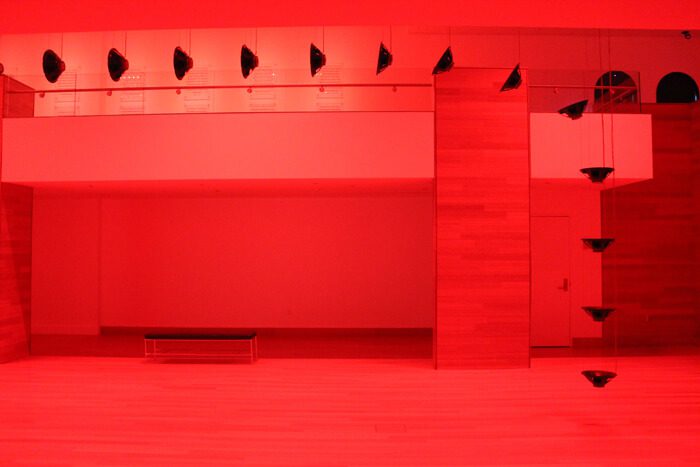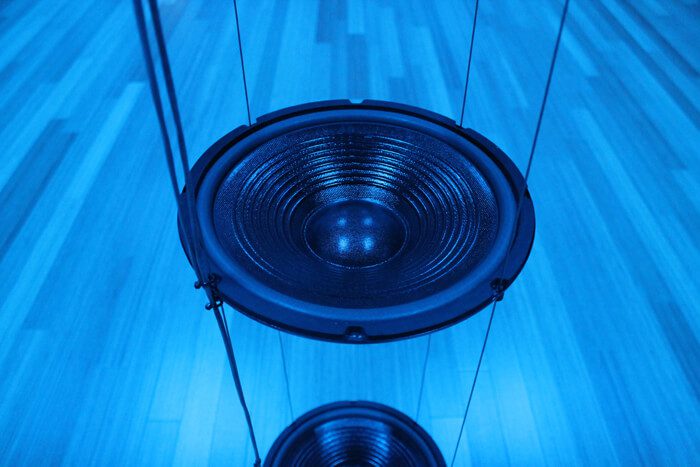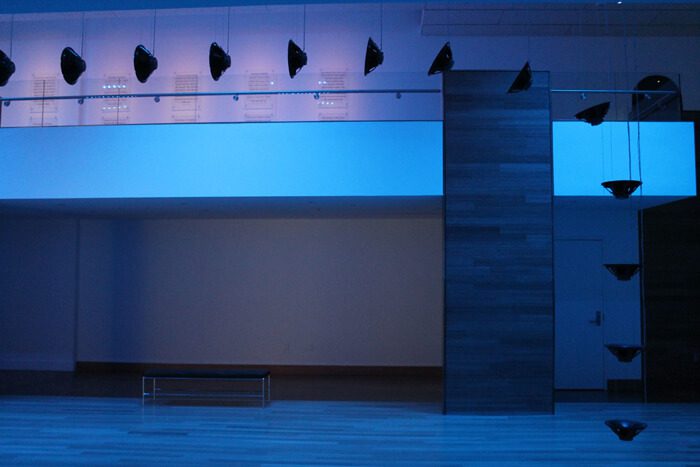
July 5-November 3, 2019
Heard Museum, Phoenix
Bowls of fruit. Pewter platters of shucked oysters. Half-empty glasses of wine. Vases of golden sunflowers. Sumptuous feasts spread over unattended dark tables. Apples, sliced, with knives resting on porcelain plates. A violin propped against a sheet of music. These are the traditional subjects of the still life—soundless studies in light, visual depictions of stalled time.
Nothing about sound artist Raven Chacon’s Still Life No. 3 (2015), now on display at the Heard Museum in Phoenix, quite fits the genre. The immersive installation belongs to a series that the artist has been building since 2011 and through which he subverts the very notion of a still life.
For Still Life No. 2 (2012), Chacon, who is primarily based in Albuquerque, recorded quotidian sounds and used them to create “drumbeats” that crash into lengths of silence. The source material might be the sonic equivalent of the still life’s knife and plate, but the background sounds are rendered illegible, not quite recognizable, and the drumbeats disrupt any illusion of stillness. Still Life No. 4 (2017) is made from a recording of a single beat on an old Pueblo drum held by the Colorado Springs Fine Arts collection. With that one beat, Chacon created multiple audio timelines, sequencing a rhythmic series of beats that accelerates—in a sense removing the drum from its museum still life and returning it to time.

Still Life No. 3 is unique to the series in that it includes a spoken and textual narrative. The multimedia installation tells the emergence story, the Diné Bahane´, of the Navajo people. Over the course of a day, timed lights shift through colors that, like the four cardinal directions, are central to the story of the people’s emergence. It is a story of constant motion, transformative journeys that cycle from the first dark world to the fifth—the earth surface, where wind is as powerful as the word. The voice of Melvatha Chee (Diné) tells this story in Diné, with delay systems that contest linearity, layering parts of the story so that past, present, and future converge. Listening, viewers can read excerpts from the Diné Bahane´ in English and/or in Diné as they move through the changing light.
This work, like others in the series, is deeply concerned with continuity and place, with sound’s integral role in storytelling, with who tells a people’s story, and with the recursive qualities of human time. Visitors to the Heard will have the benefit of experiencing Still Life No. 3 near the sacred mountains where the Diné Bahane´ recounts the people’s coming into being.
Also on display through September 2 is Color Riot! How Color Changed Navajo Textiles.




